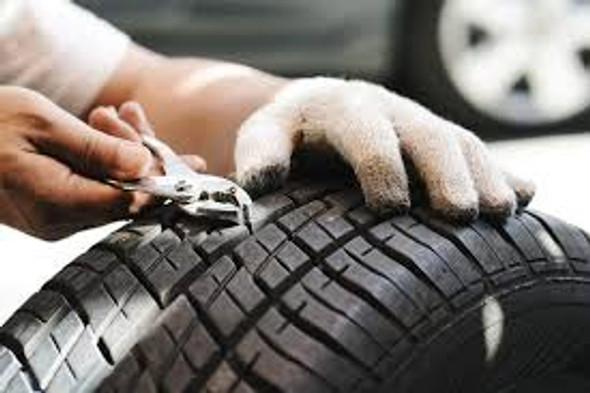Do Tire Repair Kits Really Work? Pros, Cons & Best Options
Few things are more frustrating than discovering a flat tire—whether it’s in your driveway, on a busy highway, or in the middle of nowhere. While calling for roadside assistance or replacing the tire might be the ideal solution, many drivers turn to tire puncture repair kits as a quick fix.
These kits promise fast and easy tire repairs without requiring a spare tire or a trip to the mechanic. But do they actually work? And more importantly, are they a safe and long-term solution for your vehicle?
In this guide, we’ll dive into how tire repair kits work, their pros and cons, and whether they’re a reliable option for fixing a flat tire.
Understanding Tire Puncture Repair Kits
Before deciding if a tire repair kit is right for you, it’s essential to understand what it is and how it works.
What Are Tire Repair Kits and How Do They Work?
There are two main types of tire repair kits, and they function differently:
- Plug Kits (Manual Repair Kits)
- These come with a rubber plug, an insertion tool, and adhesive.
- You push the plug into the puncture, sealing the hole from the outside.
- Often used by professionals because they provide a stronger fix.
- Sealant Kits (Temporary Fixes)
- These contain a liquid sealant and an air compressor.
- The sealant is injected into the tire, coating the inside and plugging small holes.
- The compressor reinflates the tire, allowing you to drive to safety.
Both types can get you back on the road quickly, but they are not designed for permanent repairs.
When Should You Use a Tire Repair Kit?
A tire repair kit can be a lifesaver in certain situations, but there are limits to what it can fix.
✅ Good for:
- Small punctures (less than 1/4 inch).
- Nail or screw holes in the tread area.
- Temporary fixes to get you to a repair shop.
❌ Not effective for:
- Sidewall damage (this can cause a dangerous blowout).
- Large cuts or gashes.
- A tire that is already significantly worn down.
If your tire is badly damaged, a repair kit won’t help—you’ll need to replace it.
The Pros and Cons of Tire Repair Kits
While tire repair kits can be incredibly useful, they aren’t perfect. Let’s weigh the pros and cons.
Advantages of Using a Tire Repair Kit
✔️ Quick and Convenient – Repairs can be completed in minutes, no need to remove the tire.
✔️ Portable and Lightweight – Easier to store than a full-size spare tire.
✔️ Saves Money on Roadside Assistance – No need to call a tow truck for a minor puncture.
✔️ Works on Most Small Punctures – Can handle common nail and screw punctures.
The Downsides of Relying on a Tire Repair Kit
❌ Not a Permanent Fix – It’s only a temporary patch; you’ll still need a professional repair.
❌ Sealant Can Damage Sensors – The liquid in sealant kits can clog Tire Pressure Monitoring Sensors (TPMS).
❌ Limited Effectiveness – Cannot fix large punctures, sidewall damage, or blowouts.
❌ Can Be Messy – Sealant kits can make it harder for professionals to fix the tire later.
Bottom line: A tire repair kit is useful in emergencies, but it’s not a long-term solution.
Comparing Tire Repair Kits to Other Repair Methods
Repair Kit vs. Spare Tire – Which Is Better?
Many newer vehicles no longer come with a spare tire, instead relying on tire repair kits. But which is better?
- Spare tires allow you to drive normally until you can replace the damaged tire.
- Repair kits work only for minor punctures and don’t last as long.
- Donut (temporary) spares offer more reliability but aren’t meant for long-term use.
If your car has room for a spare, it’s always the better choice over a repair kit.
Repair Kit vs. Professional Tire Repair
When you take your car to a tire shop, professionals will either plug or patch the tire from the inside, which is much more durable than a temporary sealant fix.
? Professional repair advantages:
- Stronger, long-lasting fix.
- Ensures no internal damage to the tire.
- Won’t void tire warranties, unlike some DIY kits.
If you use a sealant kit, be sure to tell the tire shop—some sealants can’t be removed easily, which may force you to buy a new tire instead of repairing it.
Should You Keep a Tire Repair Kit in Your Car?
While a tire repair kit isn’t a complete solution, it’s still better than nothing if you get a flat tire.
Best Situations for Carrying a Repair Kit
- If your car doesn’t have a spare tire – Many modern cars rely solely on repair kits.
- For emergency situations – A quick fix to get to the nearest shop.
- As a backup for long road trips – Can be useful in remote areas without service stations.
Choosing the Right Tire Repair Kit
If you’re considering adding a tire repair kit to your emergency toolkit, here are some highly-rated options:
- Slime Emergency Tire Sealant Kit – Great for quick fixes, includes an air compressor.
- Boulder Tools Heavy Duty Tire Plug Kit – A high-quality plug kit for permanent repairs.
- Fix-a-Flat Aerosol Sealant – Simple to use but only lasts a few days.
Conclusion
So, do tire puncture repair kits really work? The answer is yes—but only in certain situations.
They’re an excellent short-term solution for small punctures, especially in emergencies. However, they are not a replacement for proper tire repair or replacement.
If you’re driving long distances or frequently encounter rough roads, a spare tire is always a safer option. But for quick fixes, a tire repair kit is worth keeping in your car—just don’t rely on it as a permanent fix!

